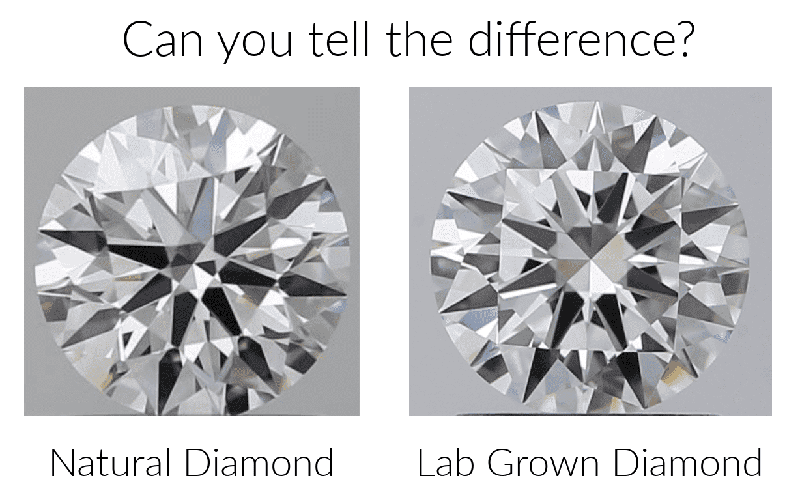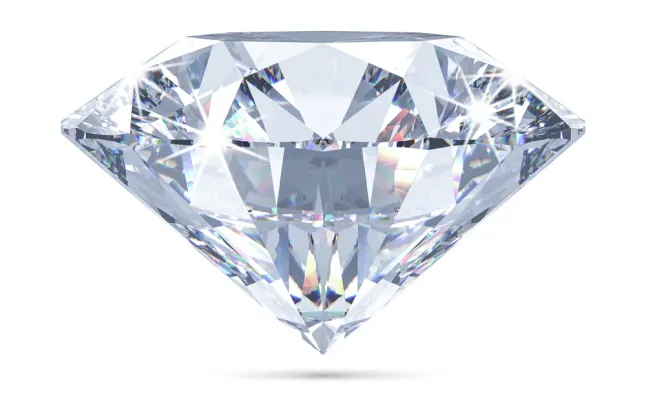Choosing Between Natural and Lab-Created Diamonds: The Modern Engagement Dilemma
The prospect of getting engaged can bring on big questions for anyone: what makes the perfect proposal? Will they say Yes? And of course, what kind of diamond should I buy? There was a time when that last question had a limited range of answers, mostly focusing on what diamond shape your beloved might prefer. But there’s a new horse at this rodeo, my friend. Now you must ask yourself, should I buy a natural or a lab grown diamond?

Lab-created: What Does It Mean?
There was a time when a lab-created stone meant “synthetic stand-in,” for the real thing, but those days are long gone. Thanks to modern technology, creating actual diamonds - pure-carbon rough, bearing the identical chemical structure and optical qualities of traditional, earth-mined stones - in a lab setting yields stones absolutely worth considering for this once-in-a-lifetime purchase.

Lab-created, lab-grown, man-made, even synthetic diamond (although that term has fallen out of use) all mean the same thing. These terms refer to diamond gemstones made through contemporary high-tech mechanical processes that mimic those found in nature, the same processes that produced the diamonds to which your parents had access, as did anyone who came before them.
You probably remember from Geology class that diamonds of natural origin, referred to as “mined” or “earth-origin” stones, were formed billions of years ago deep within the earth’s crust. Carbon-rich materials filtered through layers of shifting earth until carbon atoms collected in a central store. Intense pressure and heat generated by the forming earth provided the catalyst for the pure carbon to crystallize into what we know as “diamond” today.
Lab-created stones short-circuit the natural diamond production timeline, but not their growth process. High-tech scientific advancements led to new machinery and processes that heat and pressurize carbon atoms to the same degree as the natural processes of billions of years ago. The resulting stones are identical to naturally occurring ones in terms of chemical structure and optical brilliance.
Maybe now is the right time for you to consider purchasing a lab-grown diamond.

Benefits to Society, Environment, and You
If you’re among the vast cohort of Millennials who looks for a component of social good when making large purchasing decisions, be heartened! Lab-created diamonds may be the perfect option for you.
Lab-grown diamonds are “conflict free.” They are not part of the troubling practice of using sales of diamond rough to fund subversive militia activities in the countries where mines exist. Sales of these “blood diamonds” have dropped dramatically since 2003, when the diamond industry itself enacted a certification process that follows natural diamonds from mine to market (called the Kimberly Process). Supporting the nascent industry in lab-created diamonds encourages progressive new technologies, which frequently spawn new ones that could impact your life positively in the future.
Need another good reason? Lab-grown diamonds have a less-detrimental impact on our natural world. In this age of increasing climate change, that’s worth considering.
Sometimes called “eco-diamonds,” the growth of diamonds in a lab is significantly less harmful to our natural environment than traditional diamond mining. While energy is necessary for operating the high heat/high-pressure equipment used for growing the diamonds, the method takes place indoors under controlled conditions. It’s a clean process, with almost no risks to the surrounding environment and animal habitats.

Closer to home, another benefit to purchasing a lab-created stone is that it is often far less expensive than a comparable natural stone. The reason? Lab-grown diamonds have a much shorter path-to-market than traditionally mined stones, which often change hands multiple times on their way to the public. These lower costs may translate into saving you money or allowing you to upgrade the size or quality of your diamond purchase.
To Buy or Not To Buy?
The verdict is in! Yes, you should absolutely consider buying lab-created diamonds when making your once-in-a-lifetime engagement ring diamond purchase. Feel confident using the 4 C’s to guide your buying decision, just like you would when examining a natural diamond. The two are chemically, structurally identical.
You can feel great knowing that you’ve made your choice based on social and environmental concerns, in addition to the personal. In the end, earth origin or lab-created, your diamond will be the real deal.

